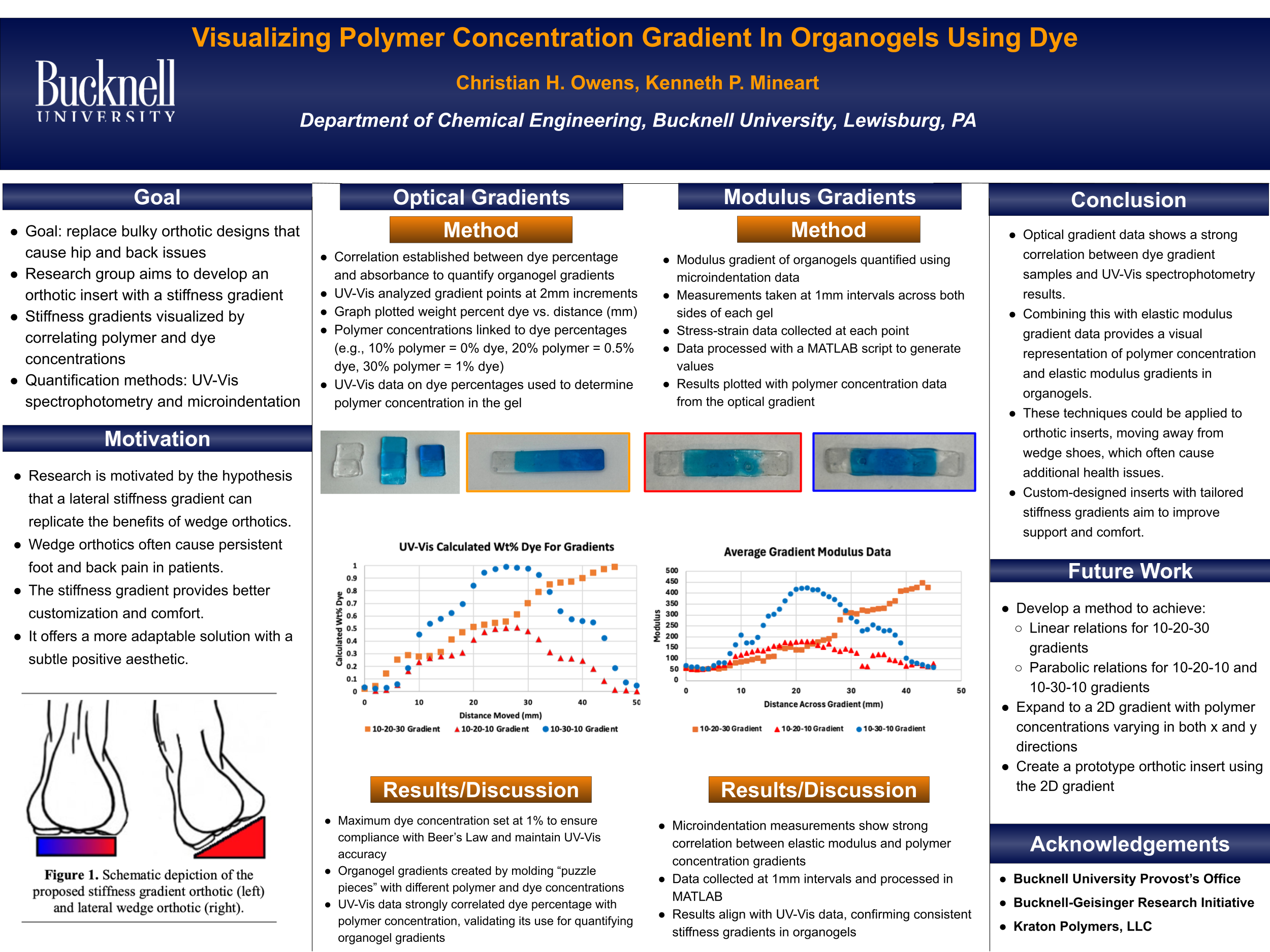
Visualizing Polymer Concentration Gradient In Organogels Using Dye
Author:
Christian Owens ’26Co-Authors:
Faculty Mentor(s):
Kenny Mineart, Chemical EngineeringFunding Source:
Bucknell-Geisinger Research InitiativeAbstract
The goal of this research is to develop polymeric gels with varying stiffness within a single sample, which could have practical applications in areas such as customized orthotics. To achieve this, a method was created to visually represent differences in gel stiffness by incorporating a dye that correlates with polymer concentration. Since these dye concentration variations are not visible to the naked eye, UV-Vis spectrophotometry was employed to quantify the dye levels. Using Blue 1 dye, a significant absorbance peak was observed at 634 nm in the UV-Vis spectrum. A calibration curve was established to relate absorbance to dye concentration, confirming adherence to Beer’s Law up to a 1 wt% dye solution. This curve facilitated accurate measurement of unknown dye concentrations in gradient samples. The results demonstrated a strong correlation between the visual appearance of dye gradients and the UV-Vis spectrophotometry data, indicating that the gradient creation method is consistent and reproducible. Additionally, microindentation testing was conducted to measure the elastic modulus across the gel samples. The data showed consistent modulus values that corresponded with the dye concentration gradients, further validating the effectiveness of the preparation method. This work presents a straightforward and reliable technique for visualizing stiffness gradients in polymer gels, supporting future development of materials with tailored mechanical properties for diverse applications.